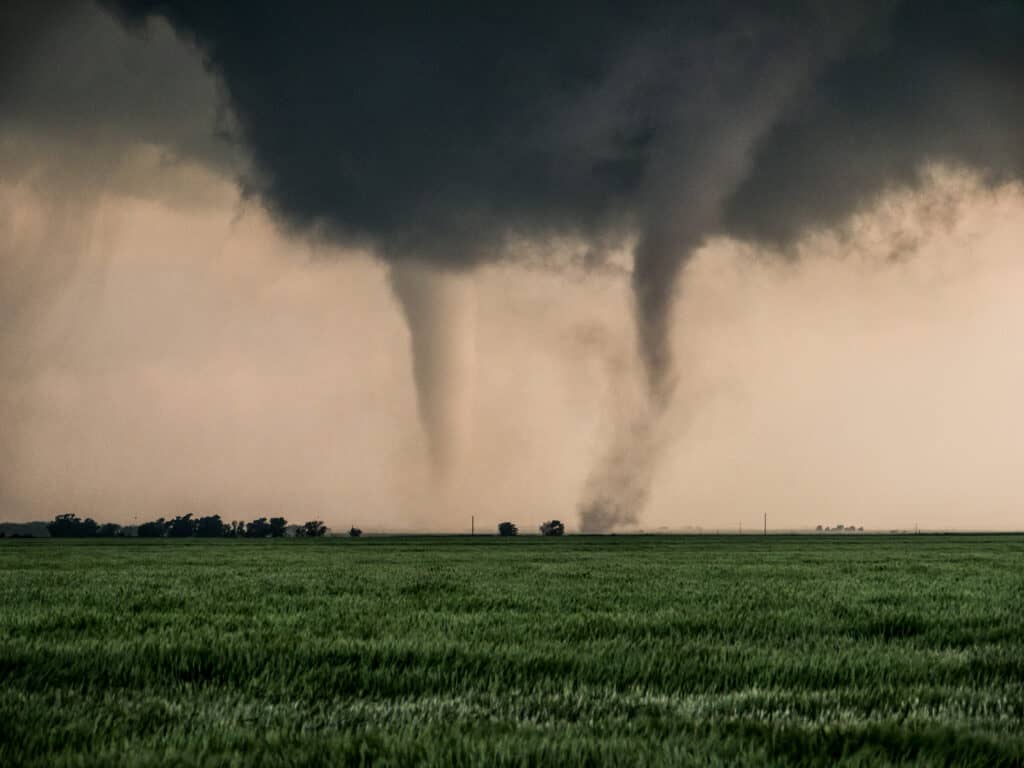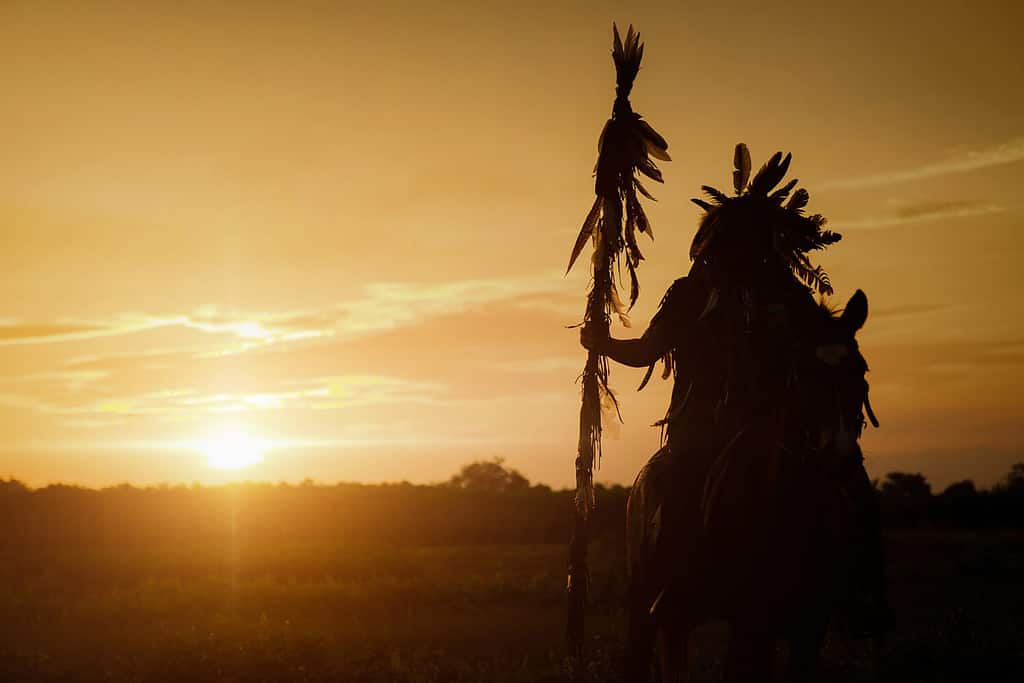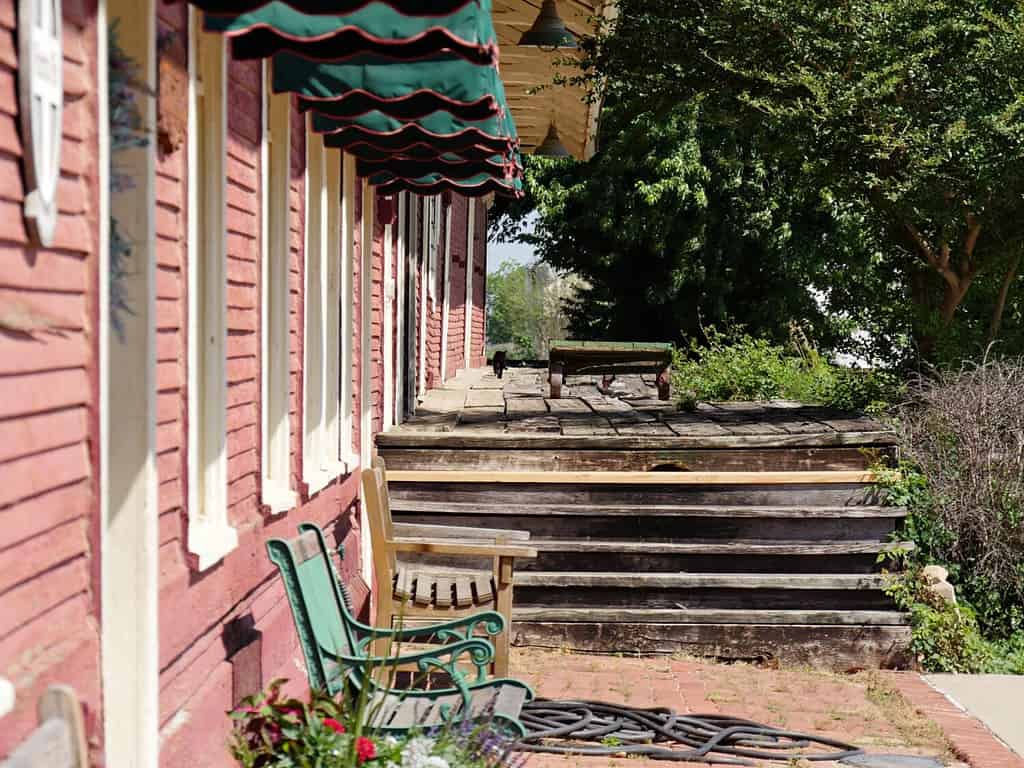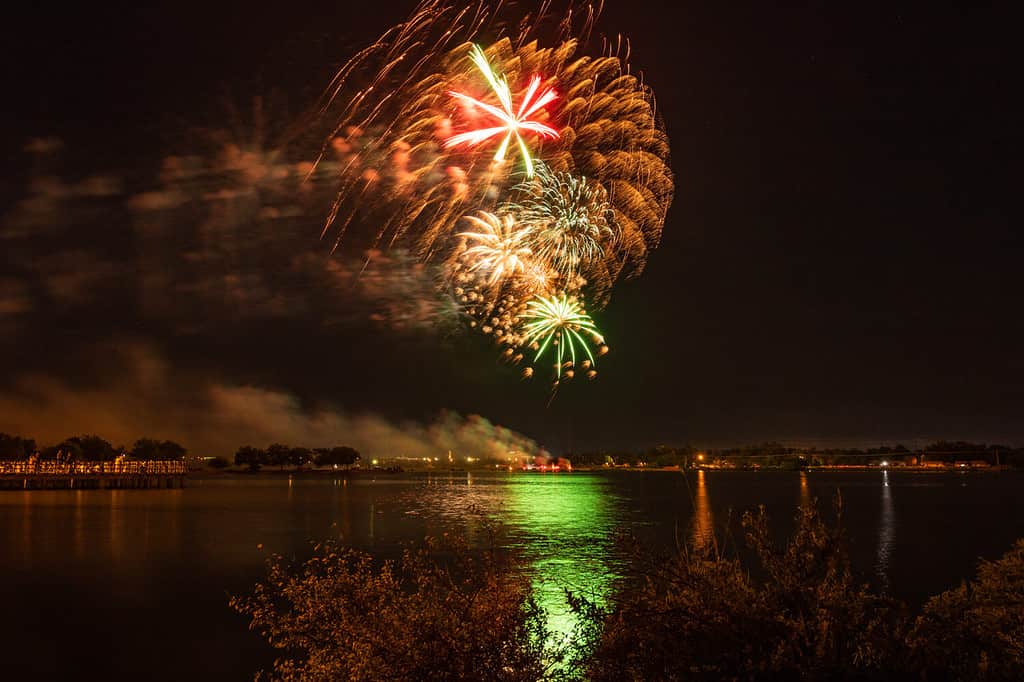Most of the population of the United States lives on the East and West coasts. So, naturally, those regions attract the most attention. International tourists don’t feel like they’ve really seen America if they don’t visit centers of power and influence like Los Angeles, New York, and Washington D.C. Americans are also attracted to those areas for work and vacations.
Meanwhile, the states in the middle of the country, like Oklahoma, are considered “flyover states.” However, this does a great disservice to the cities of the Midwest, which have played an important role in United States history and are major contributors to the economy. They manage to offer big city amenities without losing the friendly, small-town charm of Middle America. In this article, we introduce five of the oldest cities in Oklahoma. From now on, maybe you’ll consider Oklahoma a “fly-to” state!


Oklahoma is more than just one giant tornado-plagued farm. It has so much more to offer!
©Eugene R. Thieszen/Shutterstock.com
1. Muskogee, 1817 (population 36,878)
History
Muskogee is located about 48 miles southeast of Tulsa at the confluence of three rivers: the Arkansas, Verdigris, and Grand Rivers. It’s on the boundary of two regions of the state: Eastern Oklahoma with its deciduous forests, and Northeastern Oklahoma where the Great Plains begin. Native Americans originally inhabited the area before French fur traders arrived and started a trading post. Over time, this attracted additional European settlement.
The United States took control of the area as part of the Louisiana Purchase from France. In 1830, President Andrew Jackson decided to force the “Five Civilized Tribes” of Native Americans to move from the American Southeast to Oklahoma. These were the Cherokee, Chickasaw, Choctaw, Muscogee, and Seminole nations. Muskogee was an important part of this history as the host site of an Indian Agency where the tribes could meet. in 2008, Muskogee made headlines when John Tyler Hammons, a 19-year-old Cherokee Nation citizen, won a landmark election for mayor.
Attractions
Here are a few things you can do in Muskogee:
- Three Rivers Museum of Muskogee – Explore frontier history in a restored railroad depot, complete with a 1940s diesel railroad locomotive.
- Oklahoma Music Hall of Fame and Museum – This attraction celebrates the music industry. It has honored over 65 musicians and produced over 40 concerts.
- Five Civilized Tribes Museum – This museum is housed in the actual Indian Agency facility established in 1830. Today it honors the culture of the Five Tribes with historic artifacts and tribal arts and crafts.
- Creek Nation Casino – This casino has over 600 electronic casino games. Guests can win money and new cars, and enjoy drinks and food.

The infamous “Trail of Tears” brought the Cherokee tribe to Oklahoma.
©TORWAISTUDIO/Shutterstock.com
2. Fort Gibson, 1824 (population 3,814)
History
Fort Gibson is just nine miles to the east of Muskogee. It was one of a series of forts that guarded the frontier. During the 1830s, when the Indian removal policy was taking place, Fort Gibson was the largest fort in the country. Some of the famous American military figures stationed there were Robert E. Lee, Zachary Taylor, and Nathan Boone, the son of Daniel Boone. In 1857, the army turned the fort over to the Cherokee, who started a village called Kee-too-wah. In 1900, the town of Fort Gibson moved to a higher location to escape the mosquitoes, fires, and other disadvantages of the old location.
Attractions
Visitors to Fort Gibson should be sure to check out these attractions:
- Fort Gibson Historical Site – You’ll be able to take a self-guided walking tour of a reconstructed log fort, stockade, barracks, hospital, and bakehouse restored to the condition they would have been in during the Trail of Tears.
- Sequoyah State Park – Here you’ll find over 7,000 acres of wilderness with well-marked hiking trails, as well as some unmarked trails for those who are more adventurous.
- Sequoyah Riding Stables – This facility offers horseback riding lessons, guided tours, and beginner-friendly trails. Rent a horse there or bring your own from home!
- Fort Gibson Lake – Anyone who’s into boating, fishing, or water sports will appreciate Fort Gibson Lake. You can rent boats and jet skis there if you like. The lake has a lot of different fish species, and there’s plenty of wildlife on shore to see as well.

Horseback riding is one of many activities available in Fort Gibson, Oklahoma.
©Canon_photographer/Shutterstock.com
3. Tulsa, 1828 (population 413,066)
History
Tulsa is the second largest city in Oklahoma after Oklahoma City. During the Indian Removal of 1830, the Osage, Muscogee, Creek, Caddo, and other tribes started a settlement named “Tallasi” near the Creek Council Oak Tree. Later, residents changed the name to Tulsa. The city was in the thick of the action during the Wild West days of the late 1800s. Notorious outlaw gangs like the Wild Bunch and the Dalton Gang terrorized the city, robbing banks, stagecoaches, and trains and getting into gunfights with law enforcement. A couple of female outlaws named “Little Britches” and “Cattle Annie” helped warn the gangs of the movements of law enforcement.
With the discovery of oil in the area in 1901, Tulsa grew into the “Oil Capital of the World.” Today, Oklahoma produces 440,000 barrels of oil a day. It’s the fourth-largest oil producer in the United States, after Texas, North Dakota, and New Mexico. Tulsa is also the “Birthplace of Route 66,” as a Tulsa businessman named Cyrus Avery in 1925 began an effort to build a road between Chicago and Los Angeles.
Attractions
As a major American city, Tulsa has all the amenities you could want, including ports, shopping, and restaurants. Here are some attractions unique to the area:
- Woolaroc Museum and Wildlife Preserve – This former ranch of oilman Frank Phillips has become a 3,700-acre art museum and wildlife preserve.
- Appeal to the Great Spirit – Cyrus Dallin sculpted this monument as part of his series “The Epic of the Indian.” It is a famous city landmark.
- Bob Dylan Center – Fans of Bob Dylan have to check out this repository of collectibles, lyric manuscripts, and unreleased recordings owned by the famous musician.
- Buck Atom Space Cowboy – You may not have heard the name of this 21-foot cheesy statue on Route 66, but you’ve probably seen pictures of it. You’ll want to take a retro selfie with it.
- Center of the Universe – At this location in downtown Tulsa you can stand on a circle and hear your voice echoed back much louder. How does it work? Visit and see if you can figure it out.
- Route 66 Historical Markers – 26 miles of Route 66 runs through the Tulsa city limits. The city has installed 29 historical markers along the way to educate and entertain tourists about this iconic American highway and its vintage attractions.

Tulsa, Oklahoma is a modern city with tons of amenities.
©Sean Pavone/Shutterstock.com
4. Pauls Valley, 1847 (population 5,992)
History
Pauls Valley (with no apostrophe) was founded in 1847 in territory that belonged to the Chickasaw Nation. It was named for Smith Paul who married a Chickasaw woman and started a plantation, which became the nucleus of a new settlement. It was the location of the first white school in the Indian Territory of what is today Oklahoma. Today it has more brick streets than any other city in America. The mainstays of the economy are agriculture (corn, wheat, hay, and cotton) as well as the petroleum industry.
Attractions
What can you do in Pauls Valley? Try these attractions:
- The Toy and Action Figure Museum – This incredible museum has over 12,000 toys from previous generations. It has a whole floor of the art of Kevin Stark, a designer of action figures for cartoons such as The Simpsons and Teenage Mutant Ninja Turtles.
- Santa Fe Depot and Museum – Another great museum with photos, memorabilia, pioneer artifacts, a steam locomotive, and an old-fashioned red caboose.
- The Okie Noodling Tournament and Festival – This event takes place every June with a variety of family activities and live entertainment. One of the popular events is a competition in which participants compete to use their bare hands to catch the biggest catfish.

This vintage train platform served Pauls Valley, Oklahoma for many years.
©RaksyBH/Shutterstock.com
5. Stillwater, 1884 (population 48,394)
History
Stillwater began in 1884 when the federal government released new lands in Oklahoma. Officials fired cannons to signal the beginning of the “land run.” At the sound, homesteaders raced to lay claim to the best land. By the end of the day, 240 acres had been claimed. The new settlement was named “Stillwater Township,” shortened to just Stillwater in 1889 when the post office opened. The state legislature certified a land grant for a new college in Stillwater in 1890. Today, it is Oklahoma State University-Stillwater. The Princeton Review ranked it as one of the 120 “Best Western” colleges in 2014 and one of the 75 “best value” public colleges. Its veterinarian program is especially highly rated.
Attractions
Here are some things you can do in Stillwater:
- Lake McMurtry – This lake has well-stocked fishing, trails for hiking and mountain biking, camping, and a convenience store and bait shop.
- The Washington Irving Trail and Museum – American author Washington Irving used to camp in this area. This museum commemorates him and local history.
- The National Wrestling Hall of Fame and Museum – This museum is dedicated to preserving the heritage of the sport, celebrating its achievements, and encouraging young athletes.
- The Red Dirt Film Festival – An independent film festival that takes place every march on the OSU campus. It includes screenings, panel discussions, and workshops.
- Land Run 100 – This is a 100-mile bicycling endurance race around north-central Oklahoma.

This is the annual 4th of July fireworks display in Stillwater, Oklahoma.
©Ruoshi Cao/Shutterstock.com
Oklahoma, Past and Present
If you’re interested in the history of the American frontier, Oklahoma should be on your shortlist of states to visit. Explore its museums, drive along Route 66, and learn about the history of the Native American tribes that unwillingly resettled there. You’ll find that Oklahoma has a story to tell. And it’s one you’ll want to experience for yourself.
The photo featured at the top of this post is © MorphoBio/Shutterstock.com
Thank you for reading! Have some feedback for us? Contact the AZ Animals editorial team.







